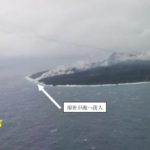On the hydrogen production of geopolymer wasteforms under irradiation
2019-12 JAEA
Cantarel, V.; 有阪 真; 山岸 功
Cantarel, V.; Arisaka, Makoto; Yamagishi, Isao
放射性廃棄物固化において、固化体からの水素発生は安全上の主要な懸念事項である。ジオポリマー材で固化する場合、材の多孔質構造中に多量の水が存在するため、水の放射線分解による水素発生が重要な因子となる。本研究では、ジオポリマー材単独またはゼオライト(模擬廃棄物)を含むジオポリマー固化体を、水飽和度と試料サイズを変えて Co
Co  線で照射し、水素放出量を測定した。試料が塊状でサイズが大きく(円筒形40cm長)かつ水で飽和している場合(円筒形40cm長)の水素ガス放出量は1.9
線で照射し、水素放出量を測定した。試料が塊状でサイズが大きく(円筒形40cm長)かつ水で飽和している場合(円筒形40cm長)の水素ガス放出量は1.9 10
10 mol/Jであり、粉末試料の放出量2.2
mol/Jであり、粉末試料の放出量2.2 10
10 mol/Jよりも2桁小さかった。測定結果をジオポリマー中での水素の発生、再結合および拡散挙動を考慮したモデルにより解釈した。ジオポリマー中の拡散係数が既知であれば、モデルは水素放出量を水飽和度の関数として再現でき、試料サイズ40cmまでの放出量を予測できることがわかった。
mol/Jよりも2桁小さかった。測定結果をジオポリマー中での水素の発生、再結合および拡散挙動を考慮したモデルにより解釈した。ジオポリマー中の拡散係数が既知であれば、モデルは水素放出量を水飽和度の関数として再現でき、試料サイズ40cmまでの放出量を予測できることがわかった。
The hydrogen gas (H ) production of wasteforms is a major safety concern for encapsulating nuclear wastes. For geopolymers, the H
) production of wasteforms is a major safety concern for encapsulating nuclear wastes. For geopolymers, the H produced by radiolytic processes is a key factor because of the large amount of water present in their porous structure. Herein, the hydrogen production was measured under
produced by radiolytic processes is a key factor because of the large amount of water present in their porous structure. Herein, the hydrogen production was measured under  Co gamma irradiation. The effect of water saturation and sample size were studied for pure geopolymers, or using zeolites as an example waste. When geopolymer monolithic samples were large and saturated by water, the hydrogen released was measured up to two orders of magnitude lower with a 40 cm long cylinder samples (1.9
Co gamma irradiation. The effect of water saturation and sample size were studied for pure geopolymers, or using zeolites as an example waste. When geopolymer monolithic samples were large and saturated by water, the hydrogen released was measured up to two orders of magnitude lower with a 40 cm long cylinder samples (1.9 10
10 mol/J) than a sample in powder form (2.2
mol/J) than a sample in powder form (2.2 10
10 mol/J). To interpret results, a simple model was used, considering only hydrogen production, a potential recombination and its diffusion in the geopolymer matrix. Knowing the diffusion constant of the matrix, the model was able to reproduce the evolution of the hydrogen release as a function of the water saturation level and predict the evolution when sample size is increased up to 40 cm.
mol/J). To interpret results, a simple model was used, considering only hydrogen production, a potential recombination and its diffusion in the geopolymer matrix. Knowing the diffusion constant of the matrix, the model was able to reproduce the evolution of the hydrogen release as a function of the water saturation level and predict the evolution when sample size is increased up to 40 cm.




